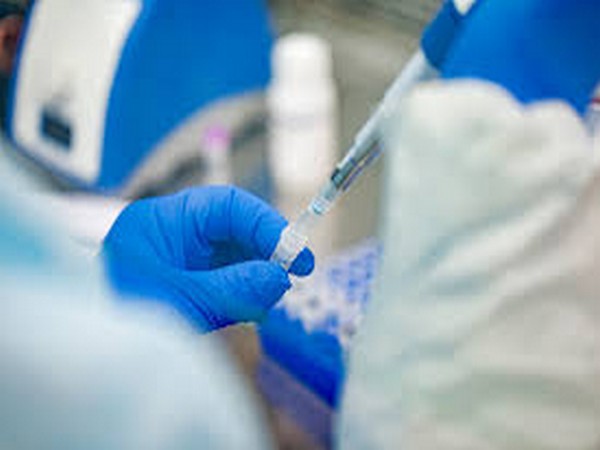Indian-led team develops cheap, electricity free centrifuge for COVID-19 testing
Researchers, led by an Indian scientist, have developed a cheap, electricity-free centrifuge to separate components in patient saliva samples for the detection of the novel coronavirus, an innovation that may increase accessibility of COVID-19 diagnostics in poor regions of the world.

- Country:
- United States
Researchers, led by an Indian scientist, have developed a cheap, electricity-free centrifuge to separate components in patient saliva samples for the detection of the novel coronavirus, an innovation that may increase the accessibility of COVID-19 diagnostics in poor regions of the world. According to the scientists, including Manu Prakash from Stanford University in the US, the 'Handyfuge' device spins tubes containing patient saliva at very high speeds, enough to separate the virus genome from other components in the sample, without needing electricity. They said the cheap centrifuge, described in a yet-to-be peer-reviewed study published in the platform medRxiv, can be assembled using readily available components for a cost less than five USD per unit. It can allow clinicians and scientists to carry out a quick and cheap diagnostic technique called the LAMP assay to detect the presence of the novel coronavirus genome in patient saliva samples, the scientists noted.
The LAMP protocol, according to Prakash and his team, "has the benefits of being simple, requiring no specialized equipment, rapid, requiring less than an hour from sample collection to readout, and cheap, costing around one dollar per reaction using commercial reagents." While the essay has several merits, the Stanford scientists said there could be variability in output in diagnostic methods based on viral genome detection in saliva samples. They explained that this is due to the saliva containing substances that can inhibit diagnostic reagents. "Centrifugation to separate the reaction inhibitors from the inactivated sample was shown to be an effective way to ensure reliable LAMP amplification," the scientists wrote in the study. However, they said a centrifuge capable of safely achieving the necessary speeds of 2000 rotations per minute (RPM), for several minutes, costs hundreds of dollars, also requiring a power supply. With Handyfuge, this hurdle can be overcome, believes Prakash -- a professor of Bioengineering at Stanford University, whose lab had earlier developed a cheap "origami microscope" called 'Foldscope'. The scientists explained that the novel device uses a mechanical strategy similar to that seen in 'Dyno-torch' flashlights to generate centrifugal force using kinetic input from the user. "The user repeatedly squeezes the handle to spin a small freewheel connected to a centrifuge spindle," they wrote in the study. After a designated amount of time, enough centrifugal force is applied to the sample-containing tubes, the scientists said, yielding a separated liquid layer that is free of chemicals that may inhibit the coronavirus genetic material, its RNA. "This supernatant can then be reliably used for LAMP detection of SARS-CoV-2 or other viruses," the researchers wrote.
According to the study, the Handyfuge-LAMP assay works based on the protocol for the diagnostic method developed by scientists, Brian Rabe and Constance Cepko, from Harvard University in the US. "This simple electricity-free LAMP protocol builds on fantastic work by Cepko lab at Harvard, but with a hand-powered centrifuge to make this assay completely electricity-free for resource-constrained settings," Prakash's lab mentioned in a tweet.
"The advantage for handyfuge is increased stability and limited fluctuations in RPM and it matches covid test need," the scientists noted on Twitter. According to the scientists, the idea started from a flashlight picked up from a toy store, which they hacked to build Handyfuge.
They said the Handyfuge, combined with the assay from Cepko and Rabe, works reliably in detecting synthetic COVID-19 RNA "down to 10-100 copies per microlitres in saliva." Commenting on the study, virologist Upasana Ray from the CSIR-Indian Institute of Chemical Biology in Kolkata said, "The mini-centrifuge is functionally equivalent to the ones used in molecular biology laboratories as benchtop electricity-driven ones." However, Ray said, nonspecific results may arise, such as when genetic sequences that have some degree of similarities although otherwise might have different origins like host versus pathogen could be detected as wrongly same. Despite this problem, Ray added that a combination of the methods can potentially help in shortlisting "doubtful/suspected samples." These samples could then be validated further, she said. "It's like picking up a handful of green peas. Later you find some of them are rotten. The earlier part is LAMP, later part is a more specific PCR reaction or real-time PCR reaction," Ray explained.
"The authors have proposed Handyfuge as a useful tool to clarify saliva samples. Saliva is an easily accessible totally noninvasive source. Thus taken together the proposed technology should be further validated on large sample sizes for a better understanding," Ray added. Using insulated coolers for reagent supply chain and delivery, the assay can be completed without the need for electricity "or any laboratory-scale infrastructure," the study noted.
However, to determine the effectiveness of the device as a point of care tool, the researchers said it will need to be validated using actual patient samples. "We are currently preparing to test this protocol and Handyfuge in field settings," they wrote in the study.
(This story has not been edited by Devdiscourse staff and is auto-generated from a syndicated feed.)










